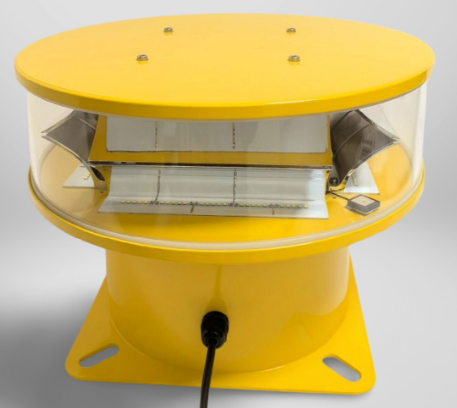Aviation Light Wind Turbine Systems: Illuminating the Future of Renewable Energy Safety
As wind energy expands globally, towering wind turbines are becoming increasingly common features of our landscapes. These massive structures, often exceeding 500 feet (150 meters) in height, pose significant collision risks for aircraft. Aviation light wind turbine systems have emerged as critical safety components, ensuring these renewable energy giants don't become hazards to air navigation. This article examines the specialized lighting solutions protecting both aviation safety and clean energy infrastructure.
The Critical Need for Wind Turbine Aviation Lighting
Modern wind turbines present unique challenges for aviation safety:
Their height places them directly in flight paths of helicopters and small aircraft
Rotating blades create moving obstacles
Remote locations often lack ground-based navigation references
Regulatory mandates from the FAA, ICAO, and other aviation authorities require aviation light wind turbine installations on all turbines exceeding 200 feet (60 meters). These systems must provide:

24/7 visibility in all weather conditions
Compliance with specific intensity and flash patterns
Reliable operation in harsh environments
Types of Aviation Lights for Wind Turbines
1. Medium-Intensity Lighting Systems
L-864 (Red Steady-Burning): Standard for nighttime marking
L-865 (White Strobe): Daytime use for maximum visibility
Typical for turbines 200-500 feet tall
2. High-Intensity Lighting (L-856)
Required for turbines exceeding 500 feet
Powerful white strobes visible up to 20 nautical miles
| Aviation light wind turbine | Aviation lights wind turbine |
Often used in offshore wind farms
3. Synchronized Lighting Systems
Multiple turbines in a farm flash simultaneously
Reduces visual pollution for nearby communities
Helps pilots identify entire wind farm boundaries
Innovations in Wind Turbine Aviation Lighting
The industry is evolving with new technologies that balance safety and environmental concerns:
1. Radar-Activated Lighting
Lights activate only when aircraft approach
Reduces light pollution when not needed
Becoming mandatory in some European countries
2. Advanced LED Solutions
80% more energy efficient than traditional strobes
10+ year lifespan with minimal maintenance
Customizable flash patterns for different conditions
3. Integrated Monitoring Systems
Remote diagnostics via IoT connectivity
Automatic fault reporting to maintenance teams
Solar-powered options for off-grid turbines
Installation and Maintenance Best Practices
Proper implementation of aviation light wind turbine systems requires:
1. Strategic Placement
Nacelle-mounted lights for maximum visibility
Additional mid-tower lights for extra-tall turbines
Proper spacing in multi-turbine installations
2. Weatherproofing Considerations
Corrosion-resistant materials for offshore installations
Heating elements for cold climate operation
Lightning protection systems
3. Compliance Management
Regular intensity testing
Documentation for aviation authorities
Updates to meet evolving regulations
The Future of Wind Turbine Lighting
Emerging technologies are transforming aviation light wind turbine systems:
1. Aircraft Detection Systems
LiDAR and radar integration
Machine learning for better threat assessment
Dynamic lighting adjustments
2. Reduced Light Pollution Solutions
Directional lighting technology
Community-friendly flash patterns
Dark-sky compliant designs
3. Hybrid Power Systems
Integrated wind-solar power for lights
Smart energy storage solutions
Self-sufficient operation
Aviation light wind turbine systems represent a crucial intersection of renewable energy development and aviation safety. As wind turbines grow taller and more numerous, advanced lighting solutions ensure they contribute to clean energy without compromising airspace safety. The industry's move toward smarter, more efficient lighting technologies demonstrates how innovation can address both operational and environmental challenges.
